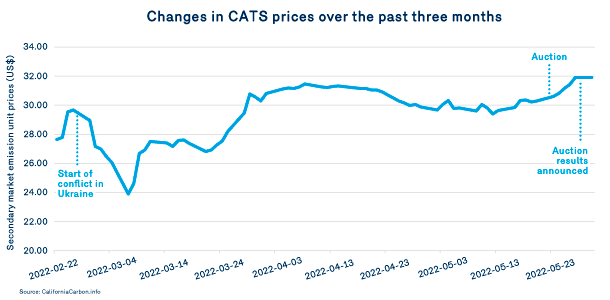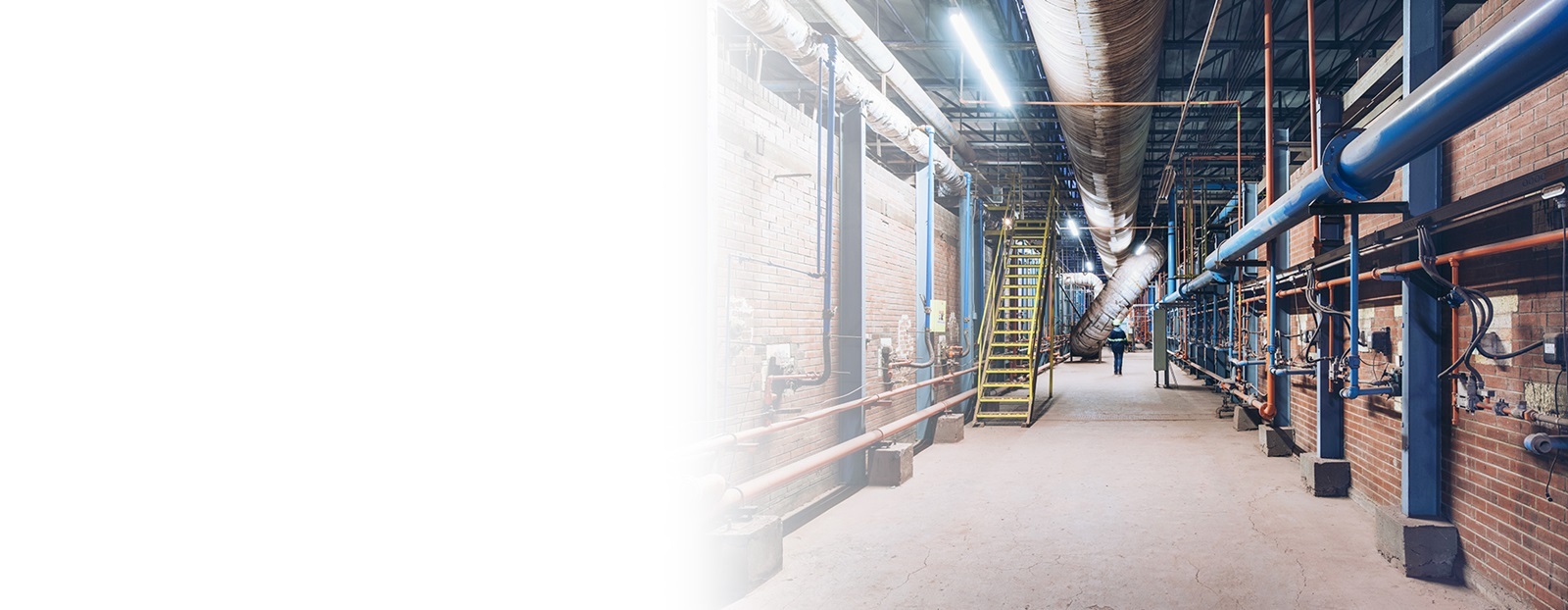Changes in Cap-and-trade-system (CATS) prices over the past three months
Over the past three months, the price of emission credits on the secondary market has fluctuated significantly. On February 24, 2022, one emission credit was trading at US$29.54 compared to US$31.43 on May 26, 2022 (+8%).
After a significant price drop at the start of the Ukrainian crisis due to widespread international uncertainty, the price gradually rose to US$31.46 on April 11, 2022. It then leveled off to around US$30-31/tCO2e until mid-May 2022. Following the announcement of the May 26, 2022 auction results, the price rose to US$32 at May 30, 2022.
Note that the secondary market peak for 2022 was until now reached in January 2022, with a price of US$33.
Although increasingly present, financial players have been generally less active since the beginning of the Ukrainian crisis.

Results of May 2022 auction
The second auction of 2022 took place on May 18, 2022. The final selling price of the current vintage emission units was US$30.84 (C$39.59), compared to US$28.13 (C$36.10) for the future vintage units. The ratio of offers accepted compared to the number of units sold at the time of the sale was 162% for current vintage emission units and 240% for future vintage units. These ratios indicate a growing demand for emission units in the market, particularly for future vintages.
Current consultation: draft regulations amending CATS regulation
On May 4, 2022, the Government of Québec published in the Gazette officielle du Québec the draft regulation amending the Regulation respecting a cap-and-trade system for greenhouse gas emission allowances .
This draft regulation primarily proposes a new approach for free emission allowances for 2024-2030 to meet Québec's 2030 reduction targets.
In summary, the government plans to reduce free emission allowances for large industrial companies and to set aside , on their behalf, a portion of the reduced units to finance their climate transition. For all large industrial companies, the average annual reduction in the free allowance should be 2.7%for the target period.
The rate of reduction of the free allowance would be adjusted according to the risk of facility relocation. To adapt to business realities, the most recent GHG emissions performance would also be gradually incorporated into the free allowance calculation. The report on the impacts of the rules regarding free allowances for 2024-2030 (in French) details the assumptions and calculation rules.
The draft regulation is also proposing changes to CATS registration, the rules for participating in auctions, and emission coverage requirements.
The 45-day public comment period will end on June 18, 2022 , the deadline for submitting comments to the Ministry of the Environment and the Fight against Climate Change.
The draft regulations and all related documents can be found here (in French).
Read the other subjects from this bulletin
Renewable natural: now available
Natural gas market conditions
Energy efficiency programs and industry 4.0 applied to energy efficiency
